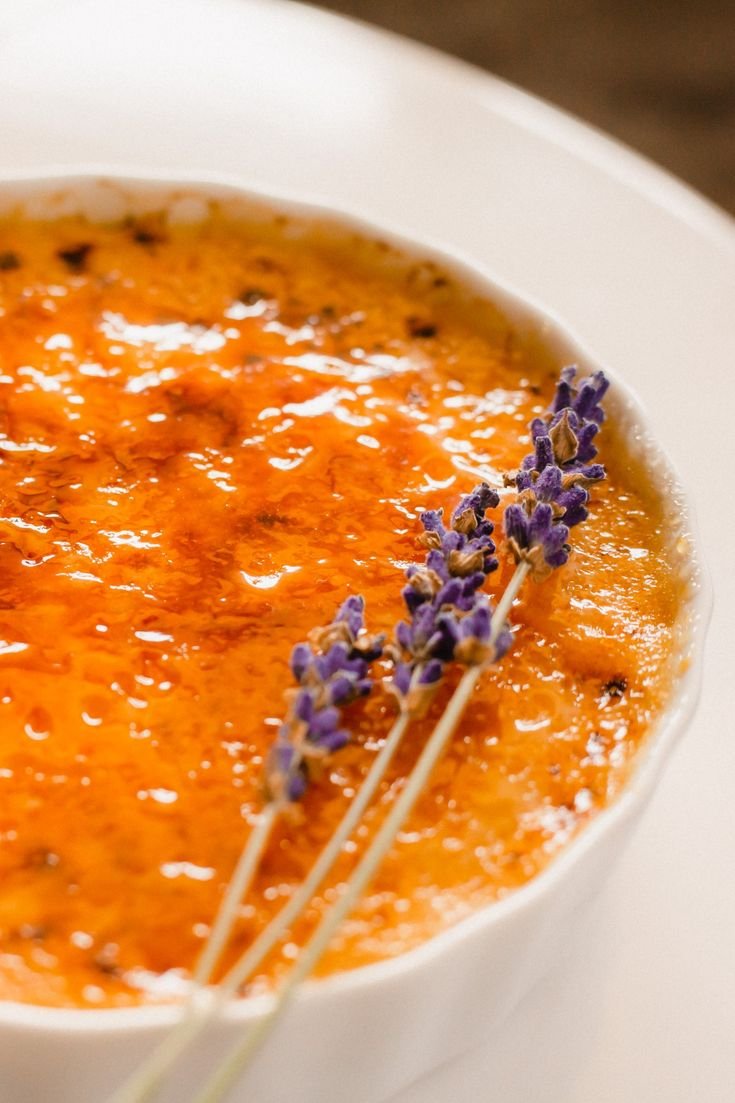Lavender Crème Brûlée Recipe
shopping list—
4 cups cream
2 tsp dried lavender
7 large egg yolks
3/4 cup sugar
1/2 tsp vanilla extract or 1 vanilla bean, scrapedpinch of salt
1/2 cup sugar, for bruleeing
steps—
Preheat the oven to 300º.
Bring the cream, sugar, lavender, vanilla, and salt to a simmer in a medium saucepan over medium low heat.
In a mixing bowl, whisk the egg yolks. Slowly pour about a third of the hot cream into the eggs to temper the yolks, and whisk until smooth.
Add the rest of the cream and whisk. Strain the custard through a fine-mesh sieve.
Arrange ramekins in a roasting pan and pour the custard into each ramekin. Place the pan in the oven, and carefully pour hot water into the pan until the water reaches halfway up the side of the ramekins.
Bake for 40 minutes, or until the center of the custard just sets (test this by gently shaking the ramekin side to side. The custard should jiggle just a little bit in the center). Take the custards out of the water and allow to cool for 30 minutes before refrigerating for 3-4 hours.
To brulee: evenly sprinkle each ramekin with sugar over the custard for a light coating. Using a kitchen torch held 4-5 inches away, melt and caramelize the sugar using even motions.
Serve immediately.
about provencal lavender
Provence is a geographical region and historical province of southeastern France known for cities like Nice and Marseilles. The Mediterranean climate is moderate with annual summer drought conditions and limestone soil perfect for growing aromatic shrubs like sage, rosemary, wild thyme, and of course, lavender.
In the 19th century, lavender became a commercial crop in France as the perfume industry grew. While lavender wasn't used in traditional Provence food until the 21st Century, lambs were allowed to graze in the purple fields as it supposedly made their meat more tender and aromatic. Lavender eventually made it's way into the spice blend Herbs de Provence.
As an aromatic, it has a sweet fragrance with citrus and floral notes, and is used as an herb in desserts, dressings, salads, and teas. Although it can be associated with soap, when used in moderation it's a lovely floral addition to food or drinks. Feel free to explore with cocktails (like a French 75), lemonade, and simple syrups. It's particularly good in cream-based desserts like crème brulèe.

